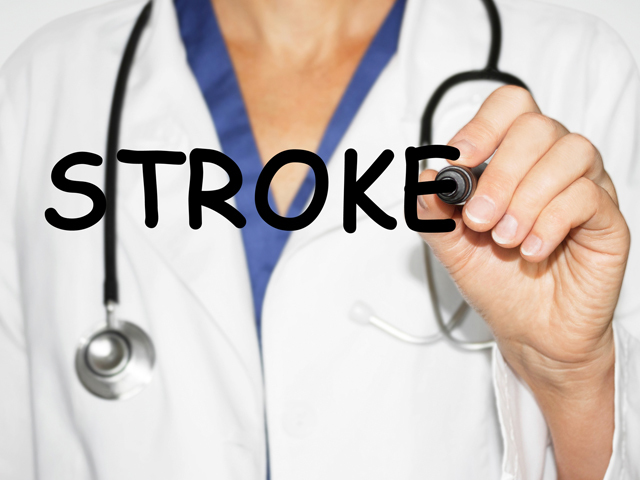Diabetes and Stroke
Double Threat: Comprehending the Risk of Stroke in Diabetes
Diabetes dramatically raises the risk of stroke, which is one of the leading causes of death and disability globally. When blood flow to the brain is disrupted, brain cells are deprived of oxygen and nutrients, which leads to strokes. This may result in brain injury, which can lead to a variety of issues include paralysis, trouble speaking, and cognitive loss. It is essential to comprehend the relationship between diabetes and the risk of stroke in order to manage diabetes pro-actively and avoid this catastrophic consequence.
Diabetes and Stroke
Table of Contents

The Linked Factors: How Diabetes Increases Your Chances of Stroke
Diabetes and Stroke
Diabetes-related high blood sugar levels raise the risk of stroke in a number of ways, including:
- Damaged blood vessels: The inner lining of all blood vessels in the body, including those supplying the brain, can be harmed by persistently high blood sugar. They may become more prone to inflammation and atherosclerosis, or the accumulation of plaque, as a result of this damage (fatty deposits, cholesterol, and other chemicals).
- High levels of blood fat and sugar: Elevated levels of triglycerides (blood fats) and low-density lipoprotein (“bad”) cholesterol, when paired with high blood sugar, further quicken the process of atherosclerosis, narrowing arteries and raising the risk of blood clots.
- High blood pressure: Diabetes and high blood pressure frequently coexist, putting additional strain on the heart and blood vessels and raising the risk of stroke.
- Abnormalities related to blood clotting: Diabetes can change the systems involved in blood clotting, increasing the risk of blood clot formation and the potential blockage of brain blood flow.
A Range of Incidents: Understanding the Various Types
Diabetes and Stroke
Strokes mostly come in two varieties:
- Ischemic stroke: Making up around 87% of all instances, this is the most prevalent kind of stroke. It happens when an artery providing blood to the brain is blocked by a blood clot.
- Hemorrhagic stroke: A weakening blood vessel in the brain bursts and bleeds into the surrounding brain tissue, causing a hemorrhagic stroke.
Exposing the Cautionary Signals: When to Get Help (QUICKLY)
Diabetes and Stroke
Stroke symptoms can strike out of nowhere and get worse very quickly. To reduce brain damage, it’s critical to recognise these warning signals and act FAST (Face, Arms, Speech, Time):
- Face drooping: Do you have drooping or numbness on one side of your face?
- Arm weakness: Having trouble raising both arms equally? Is a single arm numb or weak?
- Speech difficulty: Is the speech unclear or slurred?
- When to dial 911 for emergency assistance: Make an emergency service call right away if you encounter any of these symptoms. Getting medical help right away is crucial, even if the symptoms appear to be getting better.
Putting Up a Defence: Techniques to Lower the Risk of Strokes
Diabetes and Stroke
You can dramatically lower your risk of stroke by leading a healthy lifestyle and properly treating your diabetes:
- Maintain appropriate blood sugar control: Reducing the risk of stroke and improving general diabetic health depend on maintaining blood sugar levels within the target range.
- Healthy Diet: A balanced diet high in fruits, vegetables, whole grains, and lean protein is recommended for a healthy diet. Limit your intake of added sugars, cholesterol, and saturated and trans fats.
- Regular exercise: Try to get in at least 150 minutes a week of moderate-to-intense activity or 75 minutes a week of vigorous exercise.
- Sustain a healthy weight: Carrying extra weight increases the workload on your heart and blood vessels.
- Manage your blood pressure: One of the main risk factors for stroke is high blood pressure. Consult your physician to manage your blood pressure through medication and dietary adjustments.
- Quitting smoking: Smoking raises the risk of stroke and seriously impairs blood flow.
- Control your cholesterol: An accumulation of plaque in your arteries is a result of high LDL cholesterol. In addition to dietary modifications, medications may be suggested to maintain appropriate cholesterol levels.
Drug Administration and Monitoring: Collaborating with Your Physician
Diabetes and Stroke
Your doctor may prescribe the following drugs to lower your risk of stroke in addition to lifestyle changes:
- Antiplatelet drugs: These drugs aid in the prevention of blood clot formation.
- Anticoagulant drugs (blood thinners): Depending on your unique risk factors, blood thinners may be administered in certain situations.
Stroke Prevention as a Top Priority for Living Well with Diabetes
Diabetes and Stroke
You can greatly lower your risk of stroke and live a longer, healthier life by making proper diabetes management, healthy lifestyle choices, frequent medical visits, and control over other risk factors like blood pressure and cholesterol a priority. Here are a few more pointers:
- Become knowledgeable: Being aware of your stroke risk factors and warning indicators enables you to take preventative action early on.
- Be open with one another: Talk to your doctor about any worries you may have regarding your risk of stroke.
- Retain a cheerful attitude: Following a stroke, early detection and treatment can greatly improve results.
Diabetes and Stroke
Even if you have diabetes, you can reduce your risk of stroke and lead a happy, healthy life with appropriate care.


